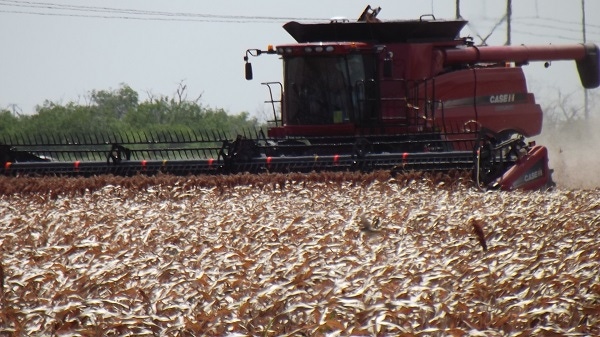
Nearly a million acres of grain sorghum is either being harvested or being prepared for harvest across South Texas from the Lower Rio Grande Valley north up the coastline to Houston, and early reports indicate the crop is yielding.
The news shared by multiple county agents and grain scouts up and down the Texas coast comes on the heels of a challenging year caused by late planting because of late and cold winter rains, and potential of a sugarcane aphid explosion, especially in the Lower Rio Grande Valley.
“We can’t declare victory until the crop is [fully] harvested and safely in the grain bins,” reports Dr. Raul Villanueva, an AgriLife Extension entomologist at the Texas A&M AgriLife Research and Extension Center at Weslaco. "But so far we have fared very well."
Harvest has already begun in parts of the Valley and Villanueva says many more producers will begin harvesting operations this week as fields continue to dry down after rains that moved across the Valley early last week.
For the latest on southwest agriculture, please check out Southwest Farm Press Daily and receive the latest news right to your inbox.
Texas AgriLife Integrated Pest Management specialist Danielle Sekula-Ortiz in Weslaco says yields so far have looked "exceptionally good" after a heavy sugarcane aphid explosion in May threatened to destroy the crop in late spring.
Population explosion
"Almost overnight we saw populations of the aphids explode, going from several hundred per plant to literally thousands," she said. "When we staged a producer meeting last month to alert growers of the seriousness and extent of the problem, nearly 200 of them attended and complained about infested fields."
She said entomologists from across the border in Mexico also attended the meeting and wanted to cooperate with eradication efforts in the Valley to better chances of eradicating the threat.
"This is a widespread problem and getting everyone on the same page was required to reduce aphid numbers," she said.
The efforts paid off. Villanueva said cooperation between growers resulted in area wide treatment with Transform, a product that received Section 18 authorization for use in grain sorghum to combat the aphids.
About 20 percent of Valley growers opted not to participate in the program and as a result have lost 50 percent or more of their crop and are expecting much smaller yields per acre. Even so, he says of some 400,000 acres of planted grain sorghum in the Valley, harvest looks very promising.
Up in the Coastal Bend, harvesters are just beginning to roll in western Nueces County. Heavy rains and strong winds over the last several weeks combined with heavy grain loads has caused some lodging in some fields, but Jason Ott, Nueces County Extension Agent for the Texas AgriLife Extension Service, says most fields appear to be in good shape.
"All and all, it is a good problem to have because it means grain is out there to harvest. However, if it cannot be harvested due to lodging the end result is the same," he warned in a recent crop update.
Harvest aids
Ott advises that in the Coastal Bend harvest aids often make harvest more efficient and when applied properly. By drying out late-emerging tiller heads and reducing differences in maturity caused by nutrient deficiencies or varying soil types, grain from the entire field will have a uniform moisture content, and this can reduce “hot loads” and price discounts.
He warns, however, when harvest aids are used it is critical that growers apply them after the grain reaches physiological maturity or “black layer” and moisture content has dropped below 30 percent to prevent the grain from losing both yield and quality. Also, growers should only treat the acreage that can be harvested in no more than 10 to 14 days.
Many producers across the Coastal Bend are opting for harvest aids this season.
Producers in San Patricio, Aransas and Refugio counties, just north of Corpus Christi, reported heavy and generally healthy grain loads. Heavy rains last week caused concern with lodging, and many fields remain too wet to harvest.
Sugarcane aphid populations dramatically increased across the Coastal Bend in late and early June, but treatments with Transform and Dimetholate helped ease pest pressure and no notable cases of disease outbreaks were reported.
Further up the coast, even heavier rains, as much as 6 to 8 inches over a two week period in June, slowed late-planted crop progress and has made pest treatments difficult. In some cases north of Victoria, producers have complained they have not been able to access fields to scout for aphid populations.
But as drier weather returned to most areas along the Texas coast late last week and temperatures are again climbing to seasonal averages, the latest reports indicate this year's South Texas grain harvest should yield better results than in recent years.
About the Author(s)
You May Also Like




